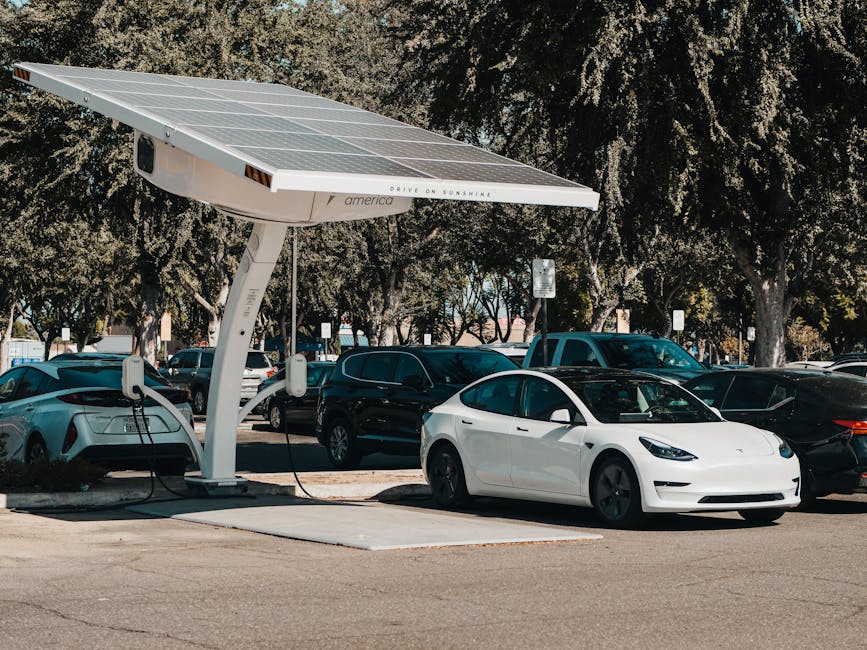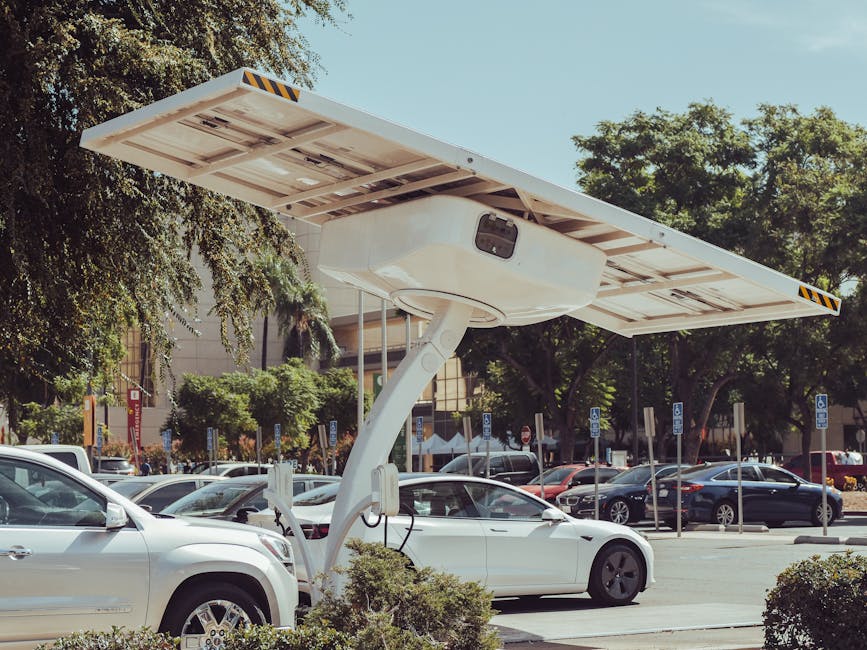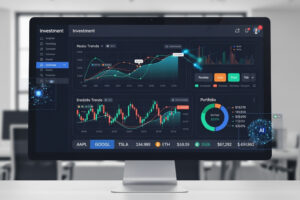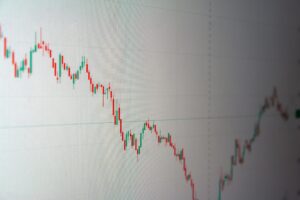automotive sustainability initiatives: 10 Powerful Best Practices 2025
The Race to Green: How Automotive Giants are Changing for Sustainability
Automotive sustainability initiatives are comprehensive programs implemented by vehicle manufacturers to reduce environmental impact across the entire value chain – from sourcing raw materials to end-of-life vehicle recycling. Here’s a quick overview of the key initiatives reshaping the industry:
| Initiative Type | Main Focus | Industry Examples |
|---|---|---|
| Environmental Management Systems | Reducing waste and emissions in manufacturing | BMW, Toyota (20% waste reduction) |
| Circular Economy | Material reuse and vehicle recyclability | Stellantis SUSTAINera (80% material savings) |
| Water Conservation | Reducing water usage in production | Industry leaders achieving 30% reduction |
| Renewable Energy | Carbon-neutral manufacturing facilities | BMW plants (100% carbon neutral since 2021) |
| Supply Chain Collaboration | Enforcing sustainability across tiers | 80% of automakers have supplier sustainability targets |
The automotive industry faces a critical inflection point. Responsible for nearly 9% of global greenhouse gas emissions, car manufacturers are under intense pressure to transform their operations while maintaining profitability. Climate change, resource scarcity, and evolving regulations are driving unprecedented innovation across the sector.
“Sustainability and economic success go hand in hand,” states BMW’s sustainability commitment, reflecting a growing industry consensus that environmental initiatives are no longer just about compliance but are essential for long-term business viability.
Leading manufacturers are taking bold steps. Toyota publishes comprehensive Sustainability Data Books with practical cases and numerical metrics. BMW aims to increase recycled content in new vehicles to 50% and has made all its production plants carbon neutral since 2021. Meanwhile, Stellantis has launched SUSTAINera, a circular economy program that saves up to 80% of materials compared to new part production.
These initiatives aren’t just good for the planet – they’re good for business too. Implementing Environmental Management Systems has helped manufacturers report up to 20% reduction in waste and energy use, translating to significant cost savings while meeting increasingly stringent regulatory requirements.

Basic automotive sustainability initiatives terms:
– automotive 3D printing applications
– automotive connectivity solutions
What drives automotive sustainability initiatives?
The acceleration of automotive sustainability initiatives is driven by three powerful forces:
- Policy Pressure: Governments worldwide are implementing increasingly stringent emissions regulations. The EU’s Green Deal, California’s Zero Emission Vehicle (ZEV) program, and similar policies in China are forcing manufacturers to rapidly decarbonize or face hefty penalties.
- Profit Resilience: Far from being just a cost center, sustainability is becoming a competitive advantage. As BMW puts it, “Circular economy: the purest form of Sheer Driving Pleasure.” Companies that master resource efficiency gain protection against supply chain disruptions and volatile raw material prices.
- Supply Chain ESG: Investors and stakeholders now scrutinize Environmental, Social, and Governance (ESG) performance across the entire value chain. Over 80% of automotive companies have integrated sustainability targets into their supply chain management, recognizing that their environmental footprint extends far beyond their factory walls.
Environmental Management Systems (EMS): Cornerstone of Automotive Sustainability Initiatives
Think of an Environmental Management System as the engine that powers all automotive sustainability initiatives. It’s not the flashiest part of going green, but without this structured approach, even the most ambitious eco-goals would sputter and stall.
What makes EMS so essential? It transforms environmental responsibility from vague good intentions into measurable action. Through regular audits, detailed hazard mapping, and continuous monitoring, automakers can spot problems before they become crises and track real progress over time.
ISO 14001 has emerged as the gold standard certification that manufacturers proudly display. It’s like having a sustainability seal of approval that customers and investors increasingly look for. Toyota exemplifies this approach with their impressively detailed Sustainability Data Book, which doesn’t just make promises but shows receipts – tracking everything from water usage to carbon emissions with transparent metrics.
“Implementing EMS will save costs while maintaining regulatory compliance,” explains the Automotive Industry Action Group. This isn’t just feel-good environmentalism; it’s smart business. Companies with robust EMS frameworks consistently report up to 20% reduction in waste and energy consumption. These aren’t small numbers in an industry where margins matter, and the savings quickly offset the initial investment in implementing these systems.
The most effective EMS programs create clear lines of accountability with executive oversight, ensuring sustainability isn’t relegated to a side project but becomes integrated into core business operations. Regular training keeps environmental awareness fresh among employees, turning the entire workforce into sustainability champions.
Building plant-wide automotive sustainability initiatives
Changing an entire automotive plant into a model of sustainability doesn’t happen overnight. It requires methodical planning and execution that brings everyone along for the ride.
The journey typically begins with a thorough gap analysis – an honest assessment of where you are versus where you need to be. This creates a clear roadmap and prevents the all-too-common mistake of trying to tackle everything at once. By identifying the biggest impact areas first, manufacturers can prioritize effectively.
Cross-functional teams are the secret sauce in successful sustainability initiatives. When BMW brings together engineers, procurement specialists, production managers, and facilities experts, they create solutions that work across departments rather than creating new problems while solving old ones. This collaborative approach ensures that sustainability becomes everyone’s responsibility, not just the environmental department’s problem.
Perhaps most powerful are the real-time dashboards now appearing throughout automotive plants. Toyota’s facilities showcase how immediate visibility into environmental metrics transforms behavior. When a spike in energy usage or water consumption appears on the dashboard, teams can respond immediately rather than finding problems weeks later in monthly reports.
General Motors’ “Journey to Zero” strategy demonstrates how these elements come together cohesively. Each plant operates with specific, measurable targets for reducing energy, water, waste, and emissions. Progress is tracked via centralized dashboards, creating healthy competition between facilities while maintaining a unified corporate environmental vision.
With properly implemented EMS systems, automotive manufacturers aren’t just checking regulatory boxes – they’re building sustainability into their DNA while improving their bottom line. It’s a rare win-win that’s helping transform an industry once known for its environmental footprint into a leader in sustainable innovation.
Scientific research on EMS benefits
Collaborative Supply-Chain Strategies: Profit & Planet in Sync
The automotive supply chain is a vast, interconnected web spanning the globe—with thousands of suppliers across multiple tiers working together to create a single vehicle. Today’s leading manufacturers understand that genuine sustainability can’t happen in isolation; it requires teamwork throughout this complex ecosystem.
“A common approach and message across the supply chain improves overall sustainability performance,” says the Automotive Industry Action Group, which developed Automotive Sustainability Guiding Principles that have been acceptd by numerous global OEMs since 2008.

When it comes to making supply chains more sustainable, the most successful approaches bring everyone to the table. Tier-1 alignment has proven particularly effective, where manufacturers set clear sustainability expectations for their direct suppliers, who then pass these requirements down to their own suppliers. This ripple effect can transform entire industries.
Many automakers are now adopting common ESG standards across their supply networks. This practical approach reduces the compliance headache for suppliers who typically serve multiple manufacturers, allowing them to focus on actual improvements rather than paperwork.
The spirit of collaboration extends to innovation too. Joint R&D partnerships are accelerating sustainability breakthroughs—like BMW’s work with suppliers to develop green steel production methods that could cut CO₂ emissions by a whopping 400,000 tonnes each year. That’s equivalent to the annual emissions of about 87,000 passenger vehicles!
Even logistics is getting the collaborative treatment. Shared transportation networks across multiple suppliers are helping reduce both emissions and costs—a win-win that proves sustainability and profitability can go hand in hand.
The results speak for themselves. BMW has secured over 400 supplier agreements to use 100% green electricity, dramatically shrinking their Scope 3 emissions footprint. Meanwhile, Toyota’s supplier engagement efforts have helped partners achieve major environmental improvements while keeping costs competitive.
Automotive Connectivity Solutions are the digital backbone making all this collaboration possible. These technologies provide the infrastructure needed to track environmental performance across even the most complex supply networks—turning sustainability from a vague goal into a measurable reality.
Automotive sustainability initiatives for supplier engagement
Getting suppliers excited about automotive sustainability initiatives requires both carrot and stick—clear expectations balanced with genuine support. The most successful carmakers have figured out this delicate balance.
Scorecards have become a powerful tool in this effort. Mercedes-Benz, for example, evaluates suppliers not just on traditional metrics like quality and cost, but also on environmental performance indicators including carbon footprint, water usage, and waste management. These comprehensive scorecards create healthy competition among suppliers while providing clear targets for improvement.
Smart manufacturers are also establishing co-investment funds to help suppliers finance green upgrades. Ford’s supply chain program includes financial assistance for suppliers implementing energy efficiency and renewable projects—acknowledging that smaller companies often need capital support to make these transitions.
Perhaps most exciting are the green-steel pilots happening across the industry. Steel production is notoriously carbon-intensive, accounting for a significant portion of a vehicle’s manufacturing emissions. BMW’s partnerships with steel suppliers aim to slash CO₂ by up to 400,000 tonnes annually through innovative production methods—roughly equivalent to taking 87,000 cars off the road each year.
Stellantis offers a brilliant example of supplier engagement through its SUSTAINera program. This initiative weaves together remanufacturing, repair, reuse, and recycling across its entire supplier network. The results are impressive—over 2 million parts recycled in 2023 alone. This circular approach not only reduces environmental impact but also creates new business opportunities throughout the supply chain.
What makes these collaborative approaches work is their focus on shared value. When sustainability initiatives benefit both manufacturers and suppliers, they’re much more likely to succeed over the long term. The automotive industry is proving that when profit and planet align, remarkable progress becomes possible.
Water Security and Zero-Loss Manufacturing
Water has become a precious resource in the automotive industry, with automotive sustainability initiatives now placing water conservation front and center. As manufacturing plants worldwide face increasing water scarcity challenges, smart water management isn’t just environmentally responsible—it’s becoming a business necessity.
“Benchmark water-related activities in manufacturing facilities,” advises the Automotive Industry Action Group, emphasizing that you can’t improve what you don’t measure. This practical wisdom has guided industry leaders to impressive results, with many achieving water usage reductions of up to 30% through thoughtful, systematic approaches.

The journey to water efficiency typically begins with benchmarking—establishing baseline water consumption metrics and comparing performance across facilities. This simple yet powerful approach quickly reveals best practices and improvement opportunities that might otherwise remain hidden.
Many manufacturers have acceptd closed-loop water systems that capture, treat, and reuse process water multiple times. Rather than the traditional “use once and discharge” approach, these systems keep water circulating within the production process, dramatically reducing freshwater requirements.
Wastewater reuse represents another powerful strategy. Treated wastewater that once flowed down the drain now irrigates landscapes, supplies cooling towers, and supports various non-production applications. This shift in thinking—viewing wastewater as a resource rather than waste—has transformed water management practices across the industry.
The technology driving these improvements has evolved significantly too, with leak analytics playing an increasingly important role. Advanced sensors now detect even minor leaks that once went unnoticed for months, while real-time analytics help prioritize repairs based on water loss volume and cost impact.
BMW’s plant in San Luis Potosí, Mexico shows what’s possible when water conservation becomes a design priority. This pioneering facility uses 100% recycled wastewater for production processes, earning the distinction of being BMW’s first water-neutral plant. Toyota has made similar strides, with North American facilities reducing water usage per vehicle by over 25% through systematic conservation efforts.
The beauty of these water initiatives is how they deliver multiple benefits simultaneously—reducing operating costs, enhancing community relations, and building resilience against future water scarcity risks. In regions facing water stress, these efforts can even help secure the “social license to operate” that manufacturing facilities increasingly need.
KPIs for automotive sustainability initiatives in water use
Measuring water performance effectively requires the right metrics, and leading automotive manufacturers have converged on several key performance indicators that provide meaningful insights into water stewardship.
M³ per vehicle stands as the fundamental metric—how many cubic meters of water does it take to produce one vehicle? This neatly simple ratio allows for meaningful comparisons across different facilities and production volumes, regardless of size or output. Industry leaders now aim for continuous improvement in this metric, with some achieving less than 2 cubic meters per vehicle—a remarkable achievement considering historical usage patterns.
Context matters tremendously in water management, which is why local-basin risk assessment has become standard practice. A facility using 3 cubic meters per vehicle in water-abundant Michigan faces very different sustainability challenges than one using the same amount in water-stressed Mexico. Ford’s water strategy exemplifies this nuanced approach, prioritizing reduction efforts in regions facing high water stress while maintaining appropriate standards everywhere.
The CDP-Water Disclosure program has emerged as the gold standard for reporting water management practices. This comprehensive questionnaire evaluates everything from governance structures to facility-level water accounting, with top performers achieving coveted “A” ratings. For many manufacturers, improving their CDP-Water score has become a tangible way to demonstrate progress to investors and stakeholders.
Volvo’s approach shows how these metrics work together in practice. The company tracks absolute consumption while implementing detailed water risk assessments for all manufacturing sites. These assessments then inform context-based reduction targets that consider local watershed conditions—recognizing that water is inherently a local resource with impacts that must be managed accordingly.
As water scarcity concerns grow globally, these sophisticated water management approaches will likely become standard practice rather than competitive advantages. The automotive industry’s leadership in water conservation demonstrates how automotive sustainability initiatives can address environmental challenges while supporting business objectives—a win-win approach that points the way forward.
Scientific research on industrial water reuse continues to advance these practices, offering new technologies and approaches that promise even greater water efficiency in the years ahead.
Circular Economy & End-of-Life Vehicle Programs
The automotive industry is undergoing a remarkable change, shifting away from the traditional “take-make-dispose” model toward something far more sustainable. Automotive sustainability initiatives focused on circular economy principles are creating closed-loop systems that breathe new life into materials and components that once would have ended up in landfills.
“The future is circular,” BMW boldly declares – and they’re not alone. Across the industry, manufacturers are reimagining how vehicles are designed, built, used, and eventually recycled.

The circular revolution is happening through several innovative approaches. Remanufacturing has become a cornerstone strategy, with Stellantis leading the charge through their SUSTAINera program. They’ve created an impressive ecosystem that breathes new life into 12,000 different part types across 38 product lines. These aren’t lower-quality alternatives – they meet the same OEM specifications as new parts while using 80% fewer materials and generating half the carbon emissions.
Parts reuse is another powerful strategy gaining momentum. BMW’s recycling center (RDZ) has become something of a vehicle afterlife specialist, carefully dismantling up to 10,000 end-of-life vehicles every year. This process isn’t just about responsible disposal – it’s a treasure hunt for reusable components and a learning laboratory that informs future vehicle designs to make them even more recyclable.
Perhaps most exciting is the emergence of battery second life programs. As electric vehicles become mainstream, the question of what happens to their batteries becomes increasingly important. Audi’s innovative BattMAN ReLife software shows how technology can extend battery usefulness, assessing their health to determine whether they can continue powering vehicles, find new purpose in stationary energy storage, or should be recycled to recover valuable materials.
Toyota’s thoughtful “RE:THINK, RE:DUCE, RE:USE, RE:CYCLE” framework demonstrates how eco-design principles are being embedded from the earliest stages of vehicle development. By considering a vehicle’s entire lifecycle before the first prototype is built, manufacturers can maximize material efficiency and end-of-life recyclability.
These circular approaches make good business sense too. Remanufactured parts typically cost 30-50% less than new ones while offering equivalent quality and warranty protection. Battery second-life applications transform potential waste into new revenue streams. Meanwhile, the EU’s End-of-Life Vehicles Directive has set the bar high, requiring 95% of vehicle materials to be recovered – a standard manufacturers are meeting through creative design and advanced recycling technologies.
The circular economy is getting a boost from unexpected places too. Automotive 3D Printing Applications are accelerating adoption by enabling more efficient material use, making components easier to repair, and allowing design optimizations that improve recyclability.
Measuring circular automotive sustainability initiatives
How do you know if your circular economy efforts are actually making a difference? Leading automakers are developing specific metrics that reveal the true impact of their automotive sustainability initiatives.
Secondary-material percentage has become a key indicator, measuring how much recycled or reused material goes into new vehicles. BMW currently achieves about 30% recycled content on average, with ambitious plans to push that to 50%. Some plastic components already hit the 100% recycled mark, cutting their carbon footprint by an impressive 50-80%.
Material loop time tracks how quickly materials make their way back into production after use – the shorter the loop, the better. BMW’s Aluminum Closed Loop process exemplifies this approach, with press shop aluminum scraps immediately returned to suppliers for new sheet production. This tight loop minimizes transportation and processing energy while keeping valuable materials in productive use.
Remanufacturing volume reveals the scale of circular production systems. Stellantis’s program covering 12,000 part numbers across 38 product lines demonstrates just how mainstream this approach has become.
When you compare remanufactured parts to new ones, the environmental benefits become crystal clear:
| Metric | New Part | Remanufactured Part | Savings |
|---|---|---|---|
| Material Use | 100% | 20% (80% reused) | 80% |
| CO₂ Emissions | 100% | 50% | 50% |
| Energy Consumption | 100% | 15% | 85% |
| Water Usage | 100% | 40% | 60% |
With savings this dramatic, it’s easy to see why circular economy approaches have moved from the fringes to the center of automotive sustainability strategies. What was once viewed as waste is increasingly seen as a valuable resource waiting to be tapped – a fundamental shift that promises to reshape the industry for decades to come.
Renewable Energy & Carbon-Neutral Plants
The race toward clean energy has become a driving force behind automotive sustainability initiatives, with manufacturers changing their energy-hungry factories into showcases of environmental innovation.
BMW has set the bar impressively high by achieving carbon neutrality across all its production plants since 2021. This isn’t just corporate greenwashing—it represents a genuine revolution in how cars are made.
“All BMW Group plants have been CO₂ neutral since 2021,” the company proudly states, demonstrating what’s possible when environmental commitment meets engineering excellence.
This change relies on several complementary approaches that work together. Onsite solar installations have become a common sight at automotive facilities worldwide. Toyota’s Texas headquarters in Plano features a massive 8.79-megawatt solar array that not only generates clean electricity but provides the practical benefit of shading vehicles in the parking lot—a perfect example of smart, dual-purpose design.
Power Purchase Agreements (PPAs) have become another crucial tool in the sustainability toolbox. Rather than just buying generic electricity from the grid, companies like Mercedes-Benz are signing long-term contracts directly with wind farm operators, ensuring their European plants run on verifiable clean energy while providing financial certainty to renewable developers.

For processes that can’t easily be electrified, green hydrogen is emerging as a promising solution. BMW is exploring this technology for high-temperature manufacturing applications that traditionally relied on fossil fuels. Meanwhile, energy storage systems are helping manufacturers maximize their renewable energy usage. Audi’s heartwarming “PowerUp” project in South Africa demonstrates the potential here, repurposing six used EV batteries to store solar energy for a local school—giving both the batteries and the community a second chance.
These efforts align with the Science Based Targets initiative (SBTi), which provides frameworks for emissions reductions consistent with limiting global warming to 1.5°C. Ford, GM, BMW and numerous other manufacturers have committed to SBTi-validated targets, showing that the industry isn’t just making vague promises but following scientifically-verified pathways.
Mercedes-Benz aims to achieve carbon-neutral production by 2039 under its ambitious “Ambition 2039” plan, while Audi has set its sights on carbon neutrality by 2050. The competition to be the greenest automaker is heating up—and that’s wonderful news for our planet.
Automotive sustainability initiatives for scope-1 & 2 decarbonization
When it comes to tackling direct emissions (Scope 1) and electricity-related emissions (Scope 2), today’s automakers are getting increasingly sophisticated.
Some manufacturers are pioneering virtual power plants that coordinate energy generation, storage, and consumption across multiple facilities. Volkswagen’s power management systems in Wolfsburg showcase this approach, intelligently balancing energy flows across their massive manufacturing complex to maximize efficiency and minimize waste.
The best companies follow a clear carbon offsets hierarchy—first reduce energy consumption through efficiency, then switch to renewable sources, and only use carbon offsets as a last resort for truly unavoidable emissions. BMW exemplifies this strategy, treating offsets not as the solution but as the final piece of the puzzle when all other options have been exhausted.
Toyota’s approach shows how comprehensive modern decarbonization efforts have become. Their environmental strategy weaves together energy efficiency improvements, renewable energy procurement, and innovative technologies across all facilities. Progress is carefully tracked through detailed metrics in their Sustainability Data Book, showing a commitment to transparency that matches their environmental ambitions.
The beauty of these initiatives is that they’re not just good for the planet—they make financial sense too. Renewable energy prices have plummeted in recent years, making clean power economically competitive with fossil fuels. Meanwhile, energy efficiency improvements deliver ongoing cost savings that strengthen manufacturers’ bottom lines. It’s a rare win-win where doing the right thing environmentally also pays dividends financially.
As the automotive industry continues its green change, these plant-level innovations are creating the foundation for truly sustainable transportation—starting right at the factory door.
Smart Materials & Lightweight Design
The quest for smarter, lighter materials sits at the heart of modern automotive sustainability initiatives, changing how vehicles are designed and built from the ground up. This revolution isn’t just about being eco-friendly—it’s reimagining what cars can be made from while maintaining or even enhancing performance.
BMW’s innovative “secondary-first” philosophy perfectly captures this shift, prioritizing recycled and renewable materials whenever possible. Their i Vision Circular concept car stands as a remarkable testament to this approach—crafted entirely from recycled materials and designed with full recyclability in mind when its driving days are done.
“This cactus doesn’t hurt you when you sit on it,” BMW jokes about their material innovations, showcasing how sustainability can deliver comfort and performance without compromise. This light-hearted approach masks a serious commitment to reinventing automotive materials.
The material revolution is happening across multiple fronts. Audi has developed a vegan steering wheel incorporating 30% cactus fiber bio-PU, eliminating the tannery wastewater and methane emissions typically associated with leather production. Ford is putting recycled carbon fiber to work in select components, maintaining lightweight performance while dramatically reducing environmental impact.
Advanced metal alloys designed specifically for 3D printing are enabling more efficient production processes with significantly less material waste. Meanwhile, BMW’s use of Econyl—a regenerated nylon made from reclaimed fishing nets and carpets—for floor mats in their BMW iX demonstrates their creative approach to sustainable sourcing.
These innovations deliver benefits well beyond environmental goodwill. Weight reduction directly improves vehicle efficiency and range—particularly crucial for electric vehicles where every pound affects battery performance. Sustainable material sourcing also helps insulate manufacturers from supply chain disruptions, creating business resilience alongside environmental benefits.
The material choices made today ripple throughout a vehicle’s entire lifecycle. Lighter vehicles require less energy to move, reducing emissions during years of use. Recyclable, bio-based materials minimize end-of-life environmental impact. Each material innovation represents both an environmental win and a competitive advantage in an increasingly sustainability-conscious market.
Integrating 3D printing into automotive sustainability initiatives
Automotive 3D printing applications are changing automotive sustainability initiatives by fundamentally changing how parts are designed, manufactured, and replaced. This technology isn’t just a manufacturing technique—it’s a sustainability multiplier.
Rapid prototyping capabilities enable faster, more efficient development cycles, dramatically reducing material waste while accelerating the transition from concept to production. BMW’s dedicated Additive Manufacturing Campus in Munich demonstrates their commitment to this approach, centralizing 3D printing expertise to maximize its potential across their product line.
The material efficiency of additive manufacturing stands in stark contrast to traditional methods. Rather than cutting away material to create a part (subtractive manufacturing), 3D printing builds components layer by layer, using only what’s needed. For some components, this can slash material consumption by up to 90%—a stunning efficiency improvement.
When it comes to crash compliance, advanced 3D printing techniques enable the creation of complex lattice structures that optimize safety performance while minimizing weight and material use. General Motors has acceptd this approach for creating lightweight structural components that meet or exceed rigorous safety standards while using less material.
BMW’s roof bracket for the i8 Roadster perfectly illustrates the real-world potential of automotive 3D printing. This printed aluminum component weighs 44% less than its conventional counterpart while meeting all structural requirements—a win for both performance and sustainability.
As 3D printing technology continues to mature, its role in automotive sustainability will only expand. The ability to produce parts on demand reduces inventory needs and associated waste, while local production capabilities can significantly cut transportation emissions. From prototype to production to replacement parts, 3D printing is helping reshape the automotive industry into a more sustainable, efficient future.
Digital Tracking, Reporting & ESG Compliance
In today’s automotive world, digital technologies aren’t just changing our vehicles – they’re revolutionizing how companies track, report, and improve their sustainability performance. These powerful digital tools shine a spotlight on environmental impacts across those complex global supply chains that used to be nearly impossible to monitor.
PwC’s automotive sustainability assessment puts it perfectly: “Digital responsibility is a core pillar alongside emissions and value-chain sustainability.” This highlights just how crucial these digital tools have become in modern environmental management.
The digital change of automotive sustainability initiatives is happening in several exciting ways:
Blockchain Traceability is bringing unprecedented transparency to automotive supply chains. Think of it as a digital ledger that can’t be altered, providing a permanent record of materials from source to final product. Mercedes-Benz has acceptd this technology to monitor its cobalt supply chain, ensuring that sustainability standards are met every step of the way.
IoT Sensors are the eyes and ears of sustainable manufacturing. These connected devices monitor resource consumption, emissions, and waste generation in real-time, allowing teams to step in immediately when something goes wrong. Toyota’s manufacturing facilities showcase this approach wonderfully, with extensive networks of sensors tracking environmental metrics across all production processes.
AI Forecasting takes sustainability to the next level by using artificial intelligence to analyze data, spot trends, predict potential issues, and recommend optimization strategies. Ford’s impressive data analytics platform processes billions of data points to identify opportunities for saving energy and water – finding efficiencies human analysts might miss.

These digital capabilities aren’t just nice-to-have – they’re essential for meeting increasingly complex ESG (Environmental, Social, and Governance) reporting requirements. The Greenhouse Gas Protocol has become the global gold standard for emissions accounting, while frameworks from the Global Reporting Initiative (GRI) and World Economic Forum (WEF) guide broader sustainability disclosure.
As the Automotive Industry Action Group wisely recommends, companies should “set clear annual ESG goals with measurable metrics and quarterly reviews.” This data-driven approach to sustainability management ensures real progress rather than just good intentions.
Public disclosure of automotive sustainability initiatives
Gone are the days when companies could simply claim to be “green” without backing it up. Today’s stakeholders – from consumers to investors – demand comprehensive, transparent information about environmental performance. The public disclosure of automotive sustainability initiatives has evolved from a nice gesture to a competitive necessity.
Most leading automotive companies align their reporting with established frameworks to ensure completeness and comparability:
GRI Alignment provides a comprehensive foundation for sustainability disclosure. The Global Reporting Initiative’s standards cover environmental, social, and governance topics in detail. Toyota’s Sustainability Data Book exemplifies this approach beautifully, with carefully detailed metrics that follow GRI standards, making it easier for stakeholders to compare performance across companies.
WEF Metrics offer a more focused approach to disclosure. The World Economic Forum’s Stakeholder Capitalism Metrics include a concise set of universal disclosures that apply across industries. BMW has incorporated these metrics into its sustainability reporting, ensuring its environmental performance can be meaningfully compared not just with other automakers, but with companies across different sectors.
BMW’s overall approach to sustainability disclosure really demonstrates best practice in the industry. The company publishes detailed environmental statements, lifecycle assessment reports, and vehicle footprint analyses – giving stakeholders a comprehensive view of its environmental performance that goes far beyond basic compliance.
Digital platforms are making all this sustainability information more accessible and engaging than ever before. Interactive dashboards allow stakeholders to explore environmental data on their own terms, while visualization tools help communicate complex sustainability concepts in ways that everyone can understand.
For more information about sustainability trends and reporting practices in the automotive industry, visit our trends services section.
Future Trends Shaping Automotive Sustainability Initiatives
The road ahead for automotive sustainability initiatives looks exciting and transformative. As we peer into the automotive future, several game-changing technologies and approaches are emerging that will redefine what sustainability means for the industry.
Solid-state batteries represent perhaps the most anticipated breakthrough on the horizon. Unlike today’s lithium-ion batteries, these next-generation power sources promise dramatically higher energy density, faster charging times, and significantly improved safety profiles. Toyota and Volkswagen aren’t just dipping their toes in this technology—they’re diving in headfirst with substantial investments that could revolutionize electric vehicles by reducing their environmental footprint throughout the entire lifecycle.
Meanwhile, e-fuels are creating quite a buzz as a clever solution for existing vehicles. These synthetic fuels, produced using renewable electricity, offer a fascinating path to decarbonize the millions of legacy vehicles already on our roads. Porsche’s pioneering investments in e-fuel production facilities show how luxury brands are thinking beyond just new vehicle technology.
“Changing the industry requires energetic, bold and innovative action,” notes PwC’s automotive sustainability assessment, and the industry seems to be taking this to heart.
The autonomous revolution isn’t just about convenience—it’s fundamentally about sustainability too. Self-driving technologies from companies like GM’s Cruise and Ford’s Argo AI could enable dramatically more efficient vehicle utilization through shared mobility models. Imagine a world where we need far fewer vehicles to meet our transportation needs, with each autonomous vehicle serving multiple users throughout the day instead of sitting parked 95% of the time.
Mobility-as-a-Service models are already shifting us away from traditional ownership toward service-based approaches. BMW and Daimler’s joint mobility services venture demonstrates how even fierce competitors can collaborate on this transition, potentially accelerating fleet turnover and the adoption of zero-emission vehicles.

It’s worth noting that policy developments continue to be powerful catalysts for innovation. The EU’s proposed Euro 7 emissions standards are raising the bar for environmental performance, while China’s dual-credit policy for new energy vehicles and California’s Zero Emission Vehicle program create meaningful incentives for manufacturers to accelerate their sustainability changes.
Roadmap for next-gen automotive sustainability initiatives
What does the path forward look like for forward-thinking automakers? The most visionary manufacturers are developing comprehensive roadmaps that extend far beyond traditional approaches.
Innovation clusters are becoming essential hubs of creativity and problem-solving. Rather than isolated R&D departments, these interdisciplinary teams bring together diverse expertise to develop breakthrough sustainability technologies. Toyota’s Woven City project in Japan exemplifies this approach beautifully—it’s essentially a living laboratory for sustainable mobility solutions where real people interact with emerging technologies in everyday situations.
The workforce change is equally important. Skills reskilling has become a top priority as manufacturers prepare their teams for a fundamentally different automotive landscape. BMW’s investment of €469 million in further education (2023) demonstrates this commitment, with particular emphasis on building capabilities in electrification and digitalization.
Perhaps most exciting is the emergence of circular business models that create entirely new revenue streams based on keeping materials and products in use. Stellantis’ SUSTAINera program shows how remanufacturing, repair, reuse, and recycling aren’t just environmental imperatives—they’re smart business opportunities that create value while reducing waste.
“Holistic re-evaluation of products and value chains is the greatest challenge for manufacturers,” observes PwC, highlighting just how fundamental these changes really are. This isn’t about minor adjustments to existing approaches—it’s about reimagining the entire automotive value proposition.
The automakers who will thrive in this new era understand that sustainability isn’t a separate initiative or a marketing checkbox. As BMW succinctly puts it, “Sustainability and economic success go hand in hand at the BMW Group.” The future belongs to those who can fully integrate environmental thinking into every aspect of their business strategy and operations.
Frequently Asked Questions about Automotive Sustainability Initiatives
How do EMS certifications lower both risk and cost?
When manufacturers implement Environmental Management Systems (EMS) certifications like ISO 14001, they’re not just checking a compliance box – they’re open uping significant business benefits.
Think of an EMS as your car’s diagnostic system, but for environmental impacts. Just as your vehicle alerts you to problems before they become expensive repairs, automotive sustainability initiatives built around robust EMS frameworks identify environmental issues before they become costly problems.
Toyota’s approach showcases this perfectly. Their comprehensive environmental risk assessments across all facilities catch potential issues early, preventing both environmental damage and the financial penalties that come with it.
The cost savings are impressive too. Through the systematic monitoring and continuous improvement that EMS requires, BMW has dramatically reduced resource consumption in their plants. When you’re using less water, less energy, and generating less waste, the savings add up quickly. Most manufacturers report 15-20% reductions in these areas after implementing robust EMS frameworks.
Ford’s global implementation includes regular compliance audits that serve as a protective shield against violations. In the automotive world where a single environmental violation can cost millions, this preventative approach pays for itself many times over.
As Stellantis has finded, waste reduction initiatives driven by their EMS save millions annually. It’s a perfect example of how environmental responsibility and financial performance can go hand in hand.
What benchmarks define best-in-class water usage per vehicle?
When it comes to water efficiency in automotive manufacturing, the goalposts have moved dramatically in recent years. Today’s leaders aren’t just slightly better than average – they’re changing what’s possible.
The gold standard for automotive sustainability initiatives in water management is now below 2 cubic meters per vehicle. That’s remarkable progress from the industry average of 3-4 m³ just a decade ago. BMW’s most efficient plants are approaching this benchmark through holistic water management systems that track every drop.
But absolute consumption is just the beginning. Today’s leading facilities recycle over 90% of their process water, creating nearly closed-loop systems. Toyota’s Georgetown, Kentucky plant demonstrates this approach beautifully, recycling more than 90% of the water used in its notoriously water-intensive painting operations.
Some facilities have reached the ultimate goal: zero liquid discharge. Ford’s Chennai plant in India shows what’s possible even in water-stressed regions, treating and reusing all process water with no discharge to local watersheds.
What truly sets the leaders apart, though, is their contextual approach. The best manufacturers adjust their targets based on local water stress, setting more aggressive goals in regions where water scarcity is a pressing issue. This watershed-aware approach is now evaluated by the CDP Water Security questionnaire, with top performers earning recognition for their contextual strategies.
BMW’s plant in San Luis Potosí, Mexico represents the new frontier – achieving complete water neutrality by using 100% recycled wastewater for production. It’s a benchmark that’s inspiring manufacturers worldwide to reimagine what’s possible in automotive water management.
Which digital tools provide end-to-end carbon accounting?
The carbon accounting landscape has evolved dramatically, with powerful digital tools now enabling manufacturers to track their carbon footprint with unprecedented precision across the entire value chain.
For enterprise-wide carbon management, major software providers like SAP, IBM, and Salesforce offer specialized modules that seamlessly integrate with existing business systems. These comprehensive platforms automate the collection and reporting of emissions data across Scopes 1, 2, and 3, giving manufacturers a complete picture of their carbon impact.
Supply chain emissions often represent the largest portion of an automaker’s carbon footprint, which is why platforms like CDP Supply Chain and EcoVadis have become essential components of automotive sustainability initiatives. BMW leverages these collaborative tools to manage carbon reporting across its network of more than 70,000 suppliers – a task that would be impossible without digital assistance.
For detailed product-level analysis, specialized lifecycle assessment software like GaBi and SimaPro enables manufacturers to calculate the carbon footprint of individual components and complete vehicles. Toyota employs these sophisticated tools to conduct lifecycle assessments of approximately 5,000 parts per vehicle, identifying optimization opportunities throughout the product lifecycle.
The newest frontier in carbon accounting involves blockchain verification systems that provide immutable, transparent records of carbon data. Mercedes-Benz is pioneering this approach for battery material traceability, ensuring that sustainability claims can be verified throughout complex global supply chains.
The most sophisticated manufacturers aren’t using these tools in isolation – they’re creating integrated digital ecosystems that provide a single source of truth for carbon data. Ford’s global carbon management system exemplifies this integration, connecting facility-level emissions monitoring with supply chain data and product lifecycle assessments.
For companies just beginning their carbon accounting journey, the Greenhouse Gas Protocol provides standardized methodologies that form the foundation for all these digital solutions – a perfect starting point for building comprehensive carbon management capabilities.
Conclusion
The change of the automotive industry through automotive sustainability initiatives represents one of the most significant industrial shifts of our time. From circular design principles to carbon-neutral manufacturing, water conservation to digital traceability, leading manufacturers are reimagining every aspect of how vehicles are designed, produced, used, and recycled.
As we’ve explored the landscape of automotive sustainability, several key insights have emerged that can guide future efforts.
First and foremost, integration is essential. The most successful companies don’t treat sustainability as a separate department or initiative – they weave it into the fabric of their business strategy. BMW captured this perfectly when they said, “Sustainability and economic success go hand in hand.” This isn’t just corporate spin; it’s a recognition that environmental responsibility and business performance are increasingly inseparable.
The power of data-driven decision making cannot be overstated. Toyota’s comprehensive Sustainability Data Book shows how meticulous measurement creates accountability and drives continuous improvement. When manufacturers know exactly where their environmental hotspots are, they can target resources efficiently and track progress reliably.
Perhaps most encouraging is how collaboration creates scale across the industry. No single manufacturer can transform global supply chains alone. The Automotive Industry Action Group’s Sustainability Guiding Principles demonstrate how competitors can become collaborators when addressing shared environmental challenges. These industry-wide frameworks reduce compliance complexity while raising standards for everyone.
The shift to a circular economy has opened up surprising value streams. Stellantis’ SUSTAINera program brilliantly illustrates how remanufacturing and recycling aren’t just environmentally responsible – they’re economically smart. By giving materials and components multiple lives, manufacturers can reduce costs, buffer against supply chain disruptions, and create new revenue opportunities.
Of course, the journey toward automotive sustainability isn’t complete. Significant challenges remain in securing ethical battery materials, building robust recycling infrastructure, and decarbonizing complex global supply chains. But the industry’s commitment is clear and accelerating, driven by a powerful combination of consumer demand, regulatory pressure, and business logic.
For automotive professionals, staying informed about these rapidly evolving practices isn’t optional – it’s essential for future competitiveness. At Car News 4 You, we’re committed to providing ongoing coverage of the latest automotive sustainability initiatives and their implications for the industry.
The most successful manufacturers are creating what you might call a “single source of truth” – integrated systems that provide complete visibility into environmental performance across operations. This approach eliminates data silos and enables holistic decision-making that balances environmental, social, and economic considerations.
For more insights into automotive sustainability trends and technologies, visit our trends services section, where we provide regular updates on the industry’s change toward a more sustainable future.








1 thought on “Sustainability in Motion – Automotive Industry’s Best Eco-Friendly Initiatives”
Pingback: Fasten Your Seatbelts—Luxury Car Trends for 2025 Are Here - Car News 4 You
Comments are closed.